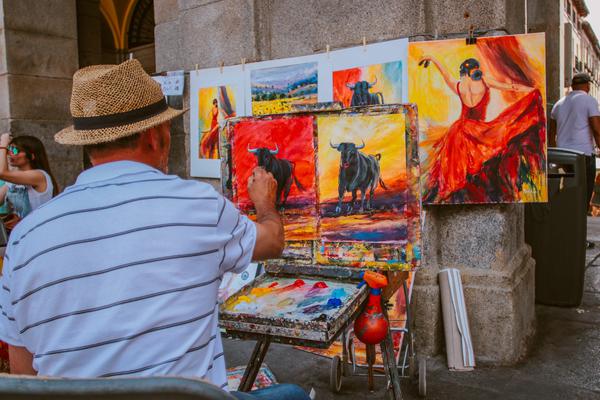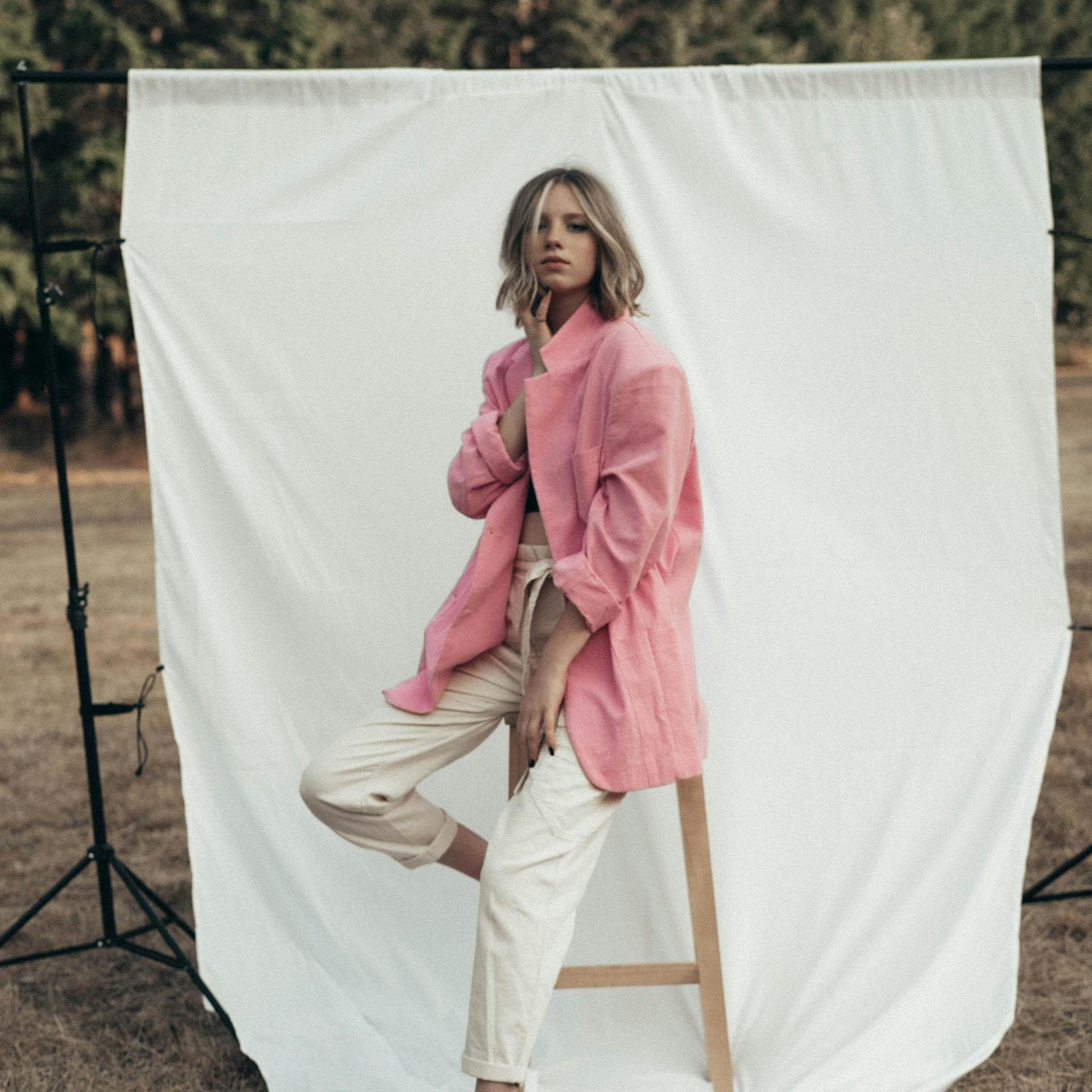
How To Create An Incredible Concept Artist Portfolio

Sam Hindman
Published onIf you're an artist looking for a creative, competitive, and fulfilling job, then concept art might be the route for you! Pursuing this art form professionally is an excellent way to get your foot in the door of the games industry (or the entertainment industry in general). Just think: Your concepts have the potential to make their way into some of the most iconic franchises around or even become the basis of entirely new ones!
Naturally, a career with such promising prospects is going to have a higher barrier to entry. That poses the question of how you, someone who may not have connections or extensive experience, can get your foot in the door. Well, the best way to begin getting noticed by the right people is by building your own concept art portfolio! In this article, we'll give you all the information you need to set one up ASAP.
What Is A Concept Art Portfolio?
Candidly, it's a bit self-explanatory. A concept art portfolio is a collection of conceptual art presented by the artist to demonstrate their ability to think creatively and stand out from the competition. These portfolios can be presented either physically or digitally, but in our modern era, paper copies are becoming increasingly rare.
Why All Concept Artists Should Have A Portfolio
A concept artist position requires quite a few specific characteristics from applicants. Among other things, you're expected to be dynamic and have an exceptional skill and quality level. What better way to showcase these qualities than by presenting a collection of your best work?
Having a solid portfolio is a benefit that will prove to be evergreen. Even if you aren't actively on a job hunt, it's essential that you have a personal portfolio website to stay ahead of the sometimes volatile market. You never know when you might be searching for something new or if you want to try the freelance lifestyle for size and get your own clients!
No matter the goal for your concept art, the common denominator is that you can't just cross your fingers and keep hoping that the perfect opportunity will come your way. You need to be proactive to prove your dedication and experience.
Decide How To Format Your Concept Art Portfolio
Once you've decided that you want to build a concept art portfolio, it's time for the fun part: Designing it! This is your chance to take any and every idea you have and put it to the test. It can also be slightly challenging when you're just getting started, so here are some tips to make the formatting process easier:
Make sure you pick a hosting platform for your portfolio that allows you to customize its appearance easily. While you want it to be advanced, you don't want it to be overly complex. Find something with drag-and-drop features, an abundance of templates, and the ability to support your entire body of work. Some good examples are ArtStation, Behance, or, of course, Journo Portfolio.
Don't randomly place your images. Instead, sort them into specified categories. For example, keep landscapes in one section and characters in another. This way, people who are looking for something particular can find it without struggling.
Make sure that the images you upload are of good quality. Sometimes portfolios are only looked at for a few short moments, and you wouldn't want bad quality to be the factor that drives away potential opportunities.
Including Other Pages In Your Portfolio Website
One of the best parts about hosting your portfolio online is that you aren't creatively limited. There is plenty of space for you to customize your portfolio and include any and all of the information you'd like to share with your audience. Some of this information can be best delivered through multiple website pages, particularly the ones listed below.
About Page
Yes, of course- Every artist wants their work to speak for itself. As true as this may be, showcasing personability is the best way to get hired. Allowing your audience to see and learn about the person behind the art is an excellent method for getting them to connect more with your message.
Here are some questions that you can answer within your About page to connect more with your audience:
Where do you go to find inspiration? What gives you the most inspiration when creating art?
Is there a specific reason why concept art is your preferred art form?
Have you experienced challenges in your career as an artist? If so, how did you manage to overcome them?
What do you hope to accomplish by sharing your art within the industry?
Contact Page
Another essential page to include on your concept art portfolio website is a contact page. While you'll likely have this information listed elsewhere, perhaps in your footer or on your home page, having a dedicated contact page can make it much easier for people to reach out to you about client work, interviews, or general service inquiries in the long run.
Choose What Concept Art To Include In Your Portfolio
While deciding which art pieces to include in your concept art portfolio can be one of the most exciting parts of the process, it can also be one of the most stressful. Luckily, there is an order of operations that can help ease the stress of the decision.
Consider Your Audience
The first step is to think about your audience. Who will be viewing your portfolio? Are you targeting a specific studio, industry, or job role? Tailoring your selection to match the expectations and interests of your intended audience can significantly enhance your chances of success.
Balance Cohesion and Versatility
Consider the overarching concept or theme you want your portfolio to convey. Are you inspired by fantasy worlds, futuristic sci-fi settings, or simply character-driven narratives? Whatever your focus, ensure that each piece you include showcases your unique style and vision while demonstrating your technical skills.
That being said, while having a cohesive theme is important, including a diverse range of concepts and styles can demonstrate your versatility as an artist. Showcasing your ability to tackle different genres, moods, and subjects can make your portfolio more engaging and memorable.
Get Feedback From Your Peers
Don't be afraid to seek feedback from trusted sources! Friends, mentors, or colleagues in the industry can provide valuable insights and help you narrow down your selection. Remember, your portfolio reflects you as an artist, so take the time to make it as captivating as possible!
Should I Narrow My Concept Art Content To A Specific Niche?
Ah, the age-old question: to niche or not to niche? Concept art is a dilemma many artists face. On the one hand, focusing on a specific niche can help you stand out in a crowded field and attract opportunities tailored to your interests and skills. On the other hand, embracing a broader range of concepts and styles can keep your creative juices flowing and open doors to unexpected opportunities.
The obvious benefit of zeroing in on a niche is that it can position you as an expert in that particular field. This can be especially beneficial when targeting job positions or studios with a specific focus or aesthetic.
However, don't feel constrained by a narrow focus. Embracing various concepts and styles can showcase your versatility as an artist and increase your appeal to a broader range of clients and employers. Plus, exploring different niches can keep your work fresh and exciting, preventing burnout and stimulating your creativity.
Ultimately, deciding to narrow your concept art content to a specific niche depends on your personal preferences, career goals, and the opportunities you want to pursue. The good news is, as stressful as it might be, you can always go back and make adjustments!
Always Continue Creating And Improving
As you move forward with your career in concept art, always stay focused on your passion. Even if you find yourself in a rut, and there seem to be few opportunities coming your way, use that as an excuse to pivot into something new and exciting. In all paths, but especially the path of the artist, there's never a time when you truly cease learning!
FAQs
What Should Be Included in a Concept Art Portfolio?
When creating your concept art portfolio, it's important to include a diverse range of art demonstrating your expertise in character art, environments, and concept sketches. Showcase drawings, digital paintings, character designs, environment studies, or any other art highlighting your skills and creative process.
It's not just about the art, either- It's also about you! Remember to provide insights about yourself, including your artistic statement, biography, and contact details. Consider including links to online galleries and feedback from industry professionals to enhance your portfolio's credibility. Make sure each piece reflects your unique artistic style and inspiration!
How Many Pieces Should Be in a Professional Concept Art Portfolio?
A professional concept art portfolio should feature between 10-20 carefully selected pieces of art tailored to showcase your specific skills and expertise. Choose portfolio pieces that best represent your ability to bring ideas to life, whether it's character designs, environments, or vehicles. Remember, quality over quantity is key to impressing potential employers or clients in the competitive concept art industry.
What Should You Avoid in an Online Concept Art Portfolio?
When you're crafting your online concept art portfolio, steer clear of including an excessive number of pieces that could overwhelm viewers. Make sure that every piece of artwork aligns with the style and focus you want to convey, avoiding unrelated or disjointed pieces that may need to be clarified for your audience. Also, avoid cluttered backgrounds or distracting design elements that take away from the main focus of your artwork. By maintaining a keen eye for detail and presentation, you can create a compelling online portfolio that leaves a lasting impression on industry professionals and potential collaborators.
Create Your Concept Art Portfolio Today With Journo Portfolio
Now, you have a strong understanding of what you should include in your concept art portfolio. So, the only question remaining is, what are you waiting for? It's time to display your talent to the world by creating your digital portfolio today.
Journo Portfolio prides itself on balancing ease of use and potential for customization, making it one of the best portfolio builders online. It's in the name, after all! Check out our complete list of features, and get started with your free account today.




